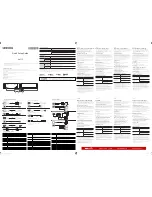Reviews:
No comments
Related manuals for ROTA-M flex 2+2 1000

36
Brand: GALLERY Pages: 18

8230
Brand: Falcon Pages: 12

1108
Brand: parr Pages: 20

2110
Brand: Landoll Pages: 71

2110
Brand: York Fitness Pages: 4

206
Brand: W&H Pages: 23

105
Brand: Bartscher Pages: 24

SH37F
Brand: Samsung Pages: 2

SSD
Brand: Dairyland Pages: 21

SD
Brand: SAMCHULLY Pages: 48

INFERNO
Brand: JB Systems Pages: 12

AFM-5
Brand: ACE INSTRUMENTS Pages: 2

LP Series
Brand: ODA Pages: 103

HI 98311
Brand: Hanna Instruments Pages: 2

HI981520
Brand: Hanna Instruments Pages: 2

HALO 2
Brand: Hanna Pages: 12

T04
Brand: Hanil Pages: 24

Supra R17
Brand: Hanil Pages: 32

















